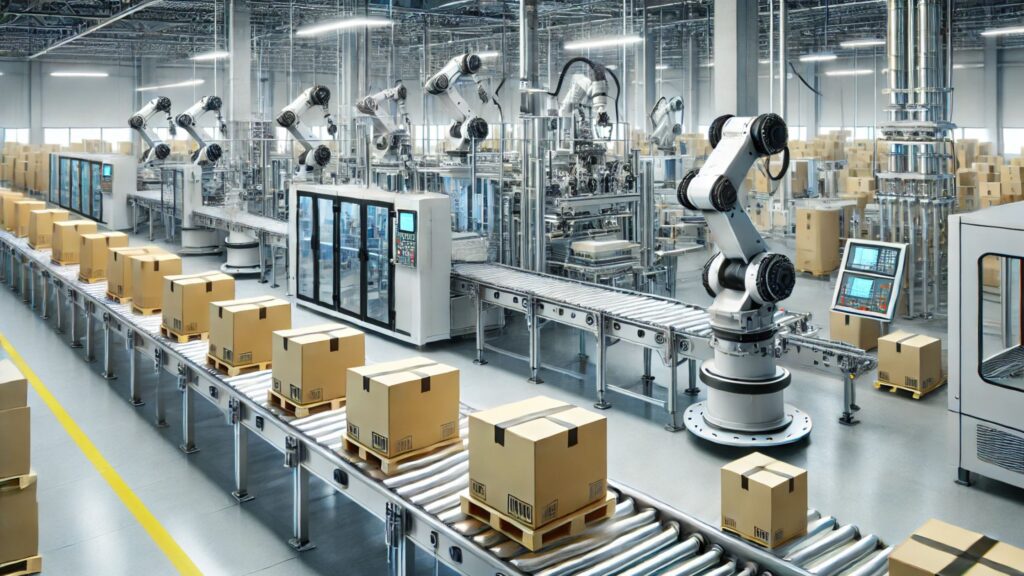In the fast-paced world of manufacturing and logistics, efficiency, precision, and cost-effectiveness are crucial for businesses to remain competitive. One essential aspect of the packaging process is secondary packaging equipment, which plays a vital role in ensuring products are securely packaged for storage, transportation, and retail presentation. While primary packaging directly encloses the product (such as bottles, blister packs, or pouches), secondary packaging adds an extra layer of protection and facilitates easier handling.
This blog post explores secondary packaging equipment, its importance, different types, and how businesses can benefit from investing in the right solutions.
What is Secondary Packaging Equipment?
Secondary packaging equipment refers to machinery designed to package already enclosed products into larger, more manageable units. It is responsible for grouping products into cartons, cases, or shrink-wrapped bundles before they reach the distribution chain. This stage is crucial for branding, efficiency, and protection against damage during transit.
Common examples of secondary packaging include:
-
Cardboard boxes or cartons
-
Trays
-
Wrap-around cases
-
Shrink-wrapped bundles
-
Palletized loads
This type of packaging ensures the safe and organized transportation of products while maintaining their integrity.
Types of Secondary Packaging Equipment
There are several categories of secondary packaging equipment, each designed to serve specific industries and packaging needs. Below are the most common types:
1. Cartoning Machines
Cartoning machines automate the process of placing products into cartons. These machines are used in various industries, such as pharmaceuticals, food, and consumer goods. They can be further classified into:
-
Horizontal Cartoners – Suitable for products that need to be inserted horizontally, such as snack bars, blister packs, and tubes.
-
Vertical Cartoners – Best for products that are inserted vertically, such as bottles, jars, and sachets.
2. Case Packers
Case packers efficiently place multiple units into a corrugated case for storage and shipping. These machines improve speed and consistency while reducing labor costs. Common types include:
-
Wrap-around Case Packers – Form and seal a case around a product.
-
Side-load Case Packers – Insert products from the side, suitable for lightweight or delicate items.
-
Top-load Case Packers – Drop products into the case from above, commonly used in food and beverage industries.
3. Shrink Wrapping Machines
Shrink wrapping involves wrapping a group of products in a plastic film and applying heat to shrink it tightly around them. This method is often used for beverage multipacks, canned goods, and pharmaceutical products.
4. Palletizing Equipment
Palletizers arrange and stack secondary packaged products onto pallets for easier shipping. They come in various types:
-
Conventional Palletizers – Use mechanical arms or conveyors to stack products in layers.
-
Robotic Palletizers – Utilize robotic arms for more flexible and precise stacking, suitable for mixed product loads.
5. Labeling and Coding Systems
Labeling machines ensure that cartons, cases, or bundles are correctly marked with product information, barcodes, or branding elements. This step is crucial for regulatory compliance and supply chain traceability.
Benefits of Investing in Secondary Packaging Equipment
Implementing secondary packaging equipment offers several advantages, including:
1. Improved Efficiency and Speed
Automated packaging solutions significantly reduce manual labor, leading to faster production cycles and higher throughput. This allows businesses to meet demand efficiently without compromising on quality.
2. Enhanced Product Protection
Proper secondary packaging prevents product damage during transportation and storage. This is especially crucial for fragile items such as glass bottles, electronics, and pharmaceuticals.
3. Cost Savings
By reducing reliance on manual labor and minimizing material waste, companies can save money on operational costs. Additionally, optimized packaging solutions reduce the risk of damaged goods, leading to fewer returns and losses.
4. Consistency and Quality Control
Automated machines ensure uniformity in packaging, which is essential for maintaining brand reputation. Each package meets precise specifications, reducing inconsistencies and errors.
5. Scalability for Growing Businesses
As businesses expand, having an efficient secondary packaging system in place allows them to scale operations without bottlenecks. Modular and customizable machinery can adapt to changing production needs.
Choosing the Right Secondary Packaging Equipment
Selecting the best secondary packaging equipment depends on several factors, including:
-
Product Type – Fragile, perishable, or heavy items require specific packaging solutions.
-
Production Volume – High-speed automation is ideal for large-scale manufacturing, while smaller operations may benefit from semi-automated systems.
-
Available Space – Some packaging machines require significant floor space, so layout considerations are important.
-
Regulatory Compliance – Industries such as pharmaceuticals and food must adhere to strict packaging regulations. Ensure that the equipment meets industry standards.
-
Integration with Existing Systems – The equipment should seamlessly integrate with upstream and downstream processes for a smooth workflow.
Conclusion
Secondary packaging equipment is a vital component of modern manufacturing, ensuring efficiency, protection, and cost-effectiveness in packaging operations. By investing in the right machinery, businesses can enhance product presentation, streamline logistics, and improve overall productivity.
Whether you’re in the food, pharmaceutical, or consumer goods industry, selecting the appropriate secondary packaging equipment can make a significant difference in your supply chain. As automation and technology continue to evolve, embracing innovative packaging solutions will be essential for staying competitive in the market.
Are you considering upgrading your secondary packaging equipment? Let us know your requirements, and we can help you find the best solution for your business!
Related Articles
- Sustainable Secondary Packaging: A Key to Greener Supply Chains
- Kraft Paper Packaging: A Sustainable and Versatile Choice for Businesses
- The Future of Carton Packaging: Sustainability, Innovation, and Market Trends
- Polybag Packaging: Benefits, Uses, and Sustainability
- The Versatility and Importance of Plastic Wrap Packaging
- Shredded Paper for Packaging: A Sustainable and Cost-Effective Solution
- Bubble Packaging: The Ultimate Solution for Protection and Sustainability
- Sandwich Packaging: Ensuring Freshness, Sustainability, and Appeal
- Biodegradable Food Packaging: A Sustainable Solution for the Future
- Eco Friendly Food Packaging: A Sustainable Choice for the Future

